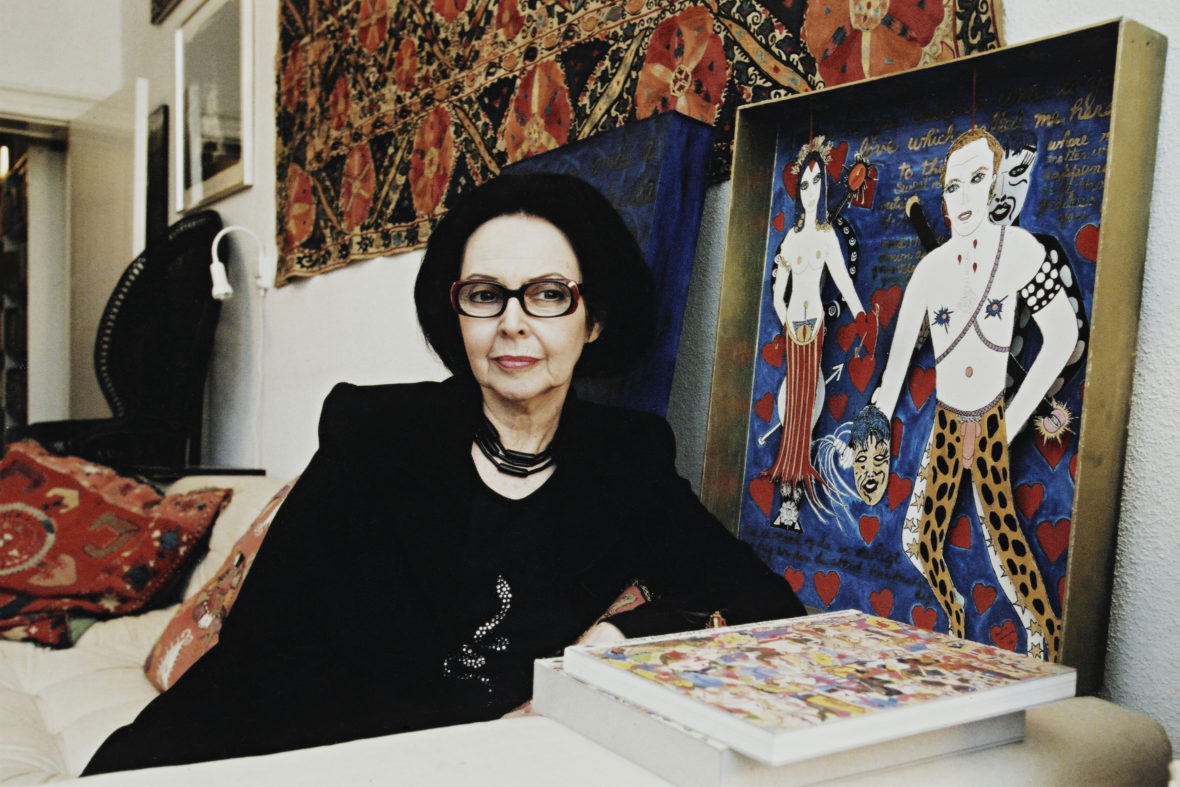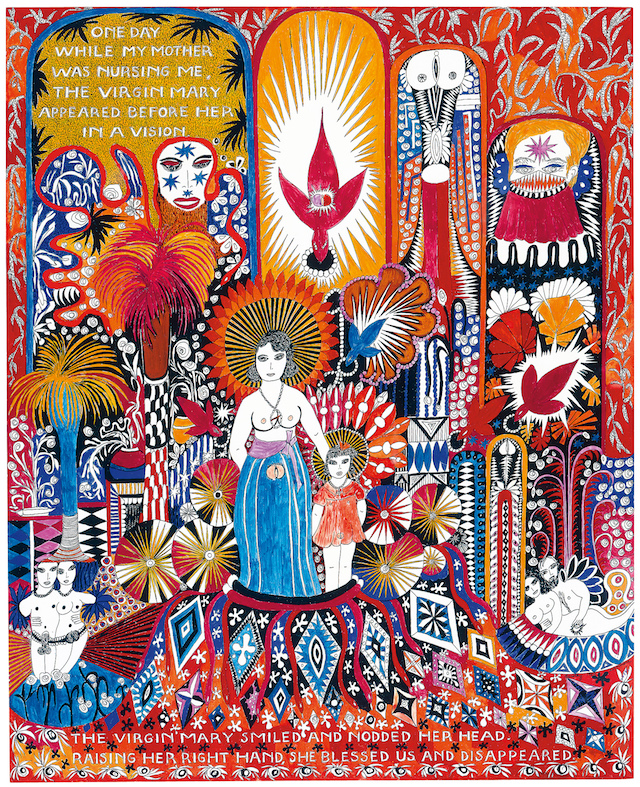Pioneering feminist artist Dorothy Iannone reflects on her latest work, produced for the first COS x Serpentine Park Night of 2018

In the sixties, I started making my ‘People’ – some hundred wooden cut-out figures. At first I took images from my paintings, which led to cut-outs of my friends, figures from old masters, pop musicians, circus people and movie stars – until I couldn’t think of anyone else I wanted to make. It took almost half a century before I returned to my cut-outs; this time the ‘Movie People’ with their stories of unconditional love, or of risking everything for the possibility of happiness. I then developed this old format with a short text that tells the stories of the figures and why they had inspired me.
Last year, Hans Ulrich Obrist, who has interviewed me many times over the past decade, invited me to participate in the Park Nights programme, but because of other commitments I was unable to accept. This year when the invitation was renewed, I was happy to say “Yes!” and was able to continue to develop ‘Movie People’ further.

The integration of painted image with text and sound, or with filmed images, has always been part of my work and I’m glad to have now been able to introduce sound to this, the progeny of my silent ‘Movie People’ cut-outs of several years ago, and perhaps to have taken a first step towards a new form in my oeuvre (or at least, to have dreamt of it).
As never before with this project, teamwork has been of the utmost importance. I have learned so much from this experience, and I feel so grateful to my old co-workers for their assistance, and delight in my new professional friends at the Serpentine. I hope the audience will remember the work with a smile, and that I have communicated what cannot be communicated in any other way than what I have presented in the ‘Movie People Perpetual Performance.’
Park Nights – staged within the unique Serpentine Pavilion in the heart of Hyde Park – is an experimental programme of live performances by compelling multidisciplinary artists from across art, architecture, music, film, philosophy and technology. At COS we are constantly inspired by the worlds of art and design, and for us it is an honour to support the Serpentine Galleries’ public performance series for a sixth year this summer.
Mexican architect Frida Escobedo is the youngest architect so far to accept the invitation to design the pavilion on the Serpentine Gallery lawn and we are excited to see Park Nights come alive in what she has created. Her pavilion has focused on the subtle interplay of light, water and geometry, creating an atmospheric courtyard which draws on Mexican architecture and British materials and history, specifically the Prime Meridian line at London’s Royal Observatory in Greenwich.
– Karin Gustafsson, COS creative director
Dorothy Iannone’s performance will take place on Friday 13 July. COS x Serpentine Park Nights 2018 runs on selected nights throughout the summer. For more information please click here.





 As the 2017 Serpentine Pavilion opens to the public, Port takes a look at the man behind this year’s commission and his journey from the villages of Burkina Faso to the gardens of Hyde Park
As the 2017 Serpentine Pavilion opens to the public, Port takes a look at the man behind this year’s commission and his journey from the villages of Burkina Faso to the gardens of Hyde Park